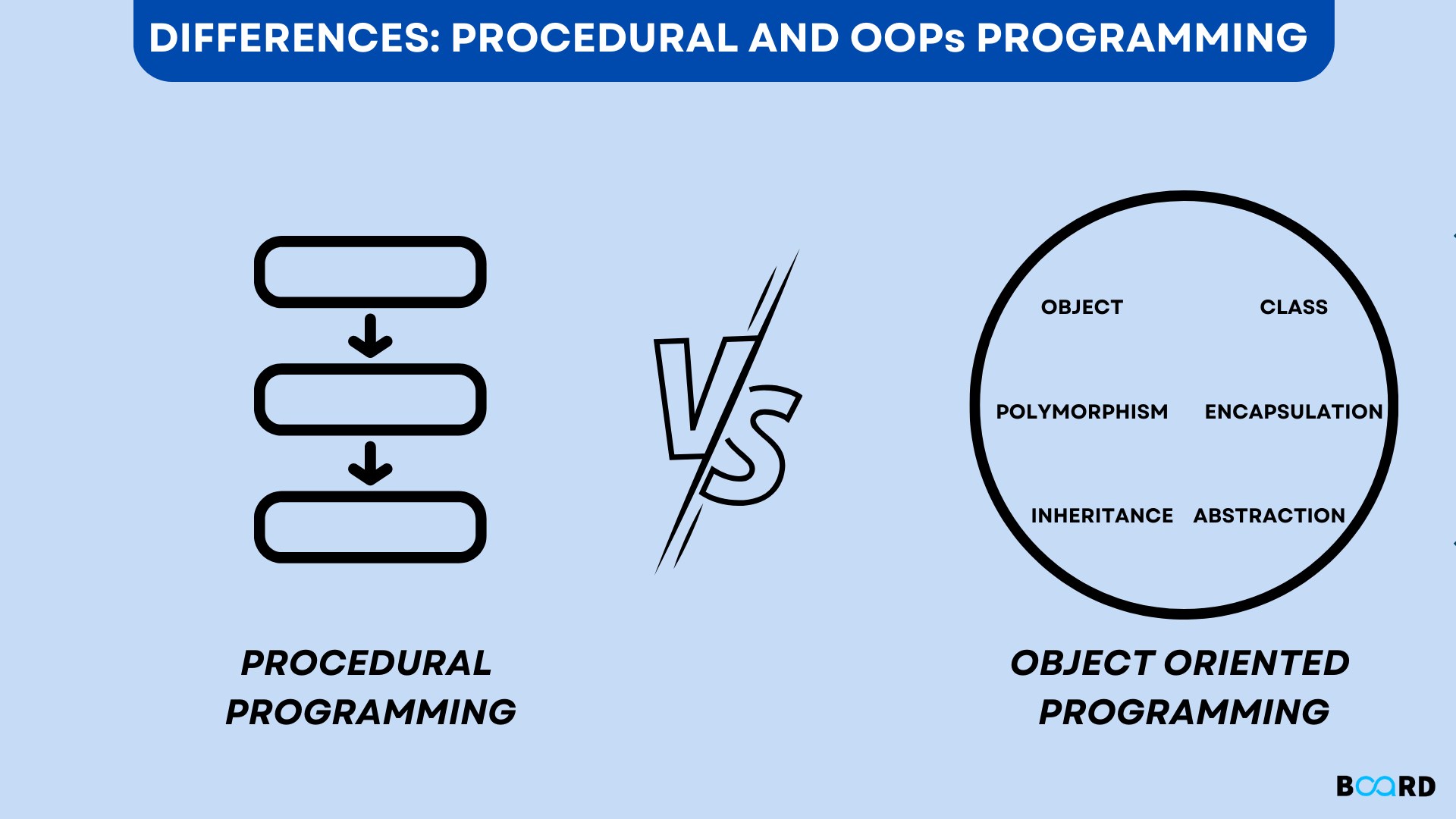Object-Oriented Programming and how does it differ from Procedural Programming

Object-oriented programming (OOP) and procedural programming are two distinct paradigms for writing computer programs, each with its own approach to structuring code and solving problems. Here's a comparison of the two:
Procedural Programming: Procedural programming is a programming paradigm based on the concept of procedures or routines, which are sequences of instructions that perform specific tasks. In procedural programming, the focus is on procedures and functions that manipulate data stored in variables.
Key characteristics of procedural programming include:
Data and Functions: Data and functions are treated separately. Data is typically stored in variables, and functions operate on this data by taking inputs and producing outputs.
Top-down Approach: Programs are typically organized as a series of procedures or functions called in a linear sequence from the main program. Control flow is driven by procedure calls and control structures like loops and conditionals.
Global Data: Data is often shared among different functions through global variables, which can lead to issues like data inconsistency and difficulty in understanding and maintaining code.
Procedural Decomposition: Programs are decomposed into smaller, more manageable procedures that perform specific tasks. This decomposition facilitates code reuse and modularization.
Examples of procedural programming languages include C, Pascal, and Fortran.
Object-Oriented Programming (OOP): Object-oriented programming (OOP) is a programming paradigm based on the concept of objects, which encapsulate data and behavior. In OOP, programs are organized around objects that interact with each other through methods (functions) and messages.
Key characteristics of object-oriented programming include:
Objects and Classes: Programs are composed of objects, which are instances of classes. Classes define the structure and behavior of objects by encapsulating data (attributes) and methods (functions) that operate on the data.
Encapsulation: Objects encapsulate data and behavior, hiding the internal implementation details and exposing only the necessary interface for interacting with the object. This improves code modularity, reusability, and maintainability.
Inheritance: Classes can inherit attributes and methods from other classes, forming a hierarchical relationship known as inheritance. Subclasses (derived classes) can extend or override the behavior of their parent classes, promoting code reuse and facilitating code organization.
Polymorphism: Polymorphism allows objects of different classes to be treated interchangeably through a common interface. This enables flexibility and extensibility in programming, as objects can respond differently to the same message based on their specific implementation.
Examples of object-oriented programming languages include Java, C++, Python, and C#.
Differences: The main differences between object-oriented programming and procedural programming lie in their approach to organizing code and managing data:
Organization: Procedural programming organizes code around procedures and functions, while object-oriented programming organizes code around objects and classes.
Data Management: In procedural programming, data and functions are treated separately, while in object-oriented programming, data and behavior are encapsulated within objects.
Code Reusability: Object-oriented programming promotes code reuse through features like inheritance and polymorphism, whereas procedural programming promotes code reuse through modularization and procedural decomposition.
Overall, the choice between object-oriented and procedural programming depends on factors such as project requirements, code maintainability, and personal preferences. Object-oriented programming is often preferred for larger, more complex projects that require modularity, extensibility, and flexibility, while procedural programming may be more suitable for smaller, simpler projects with straightforward logic.
Thank you,